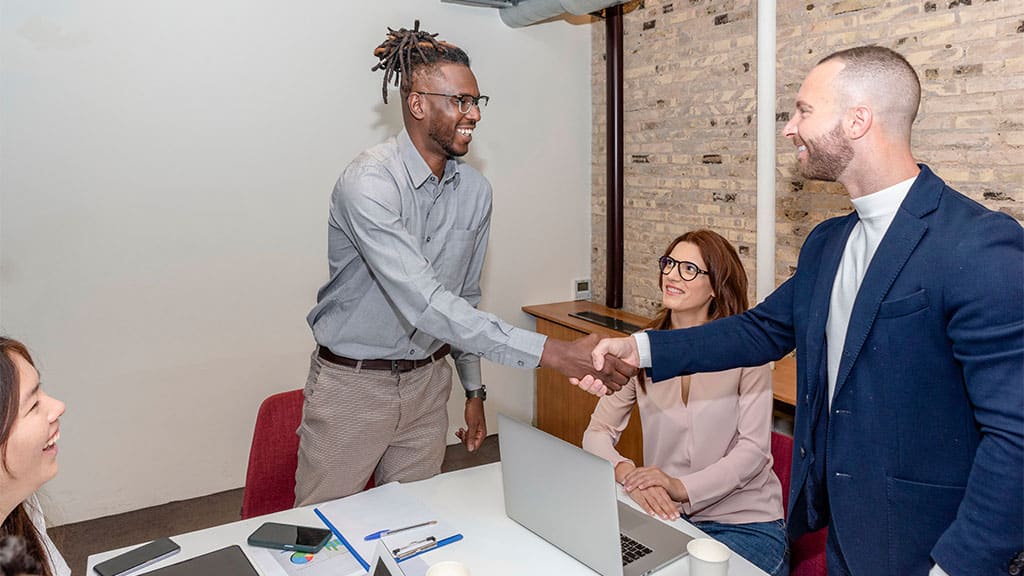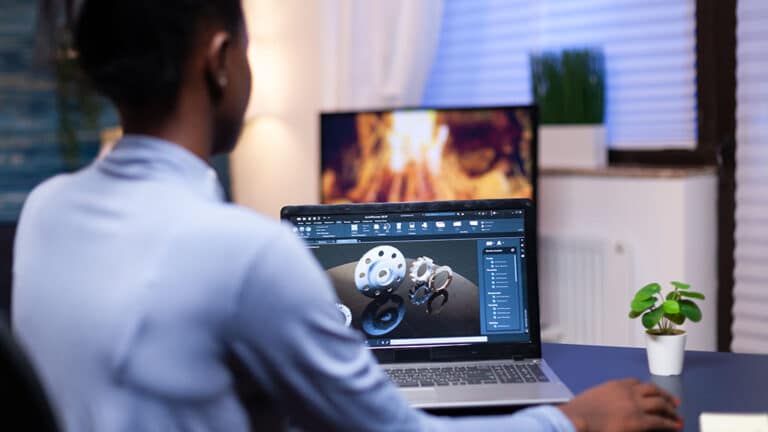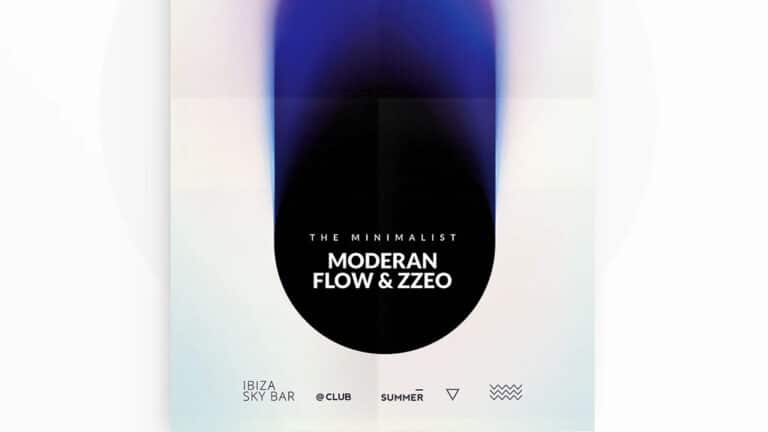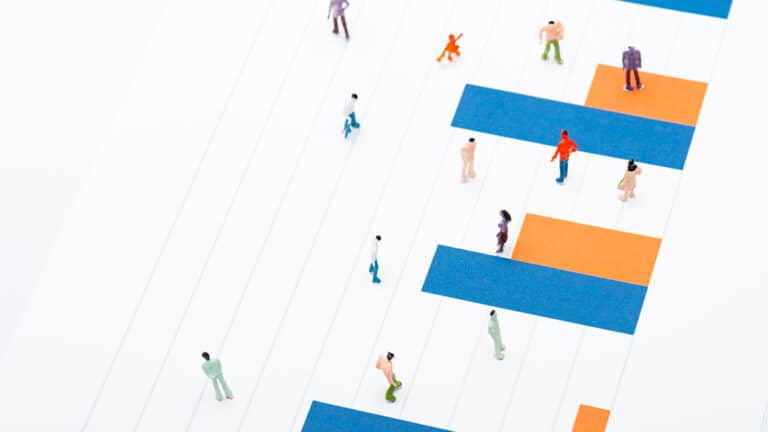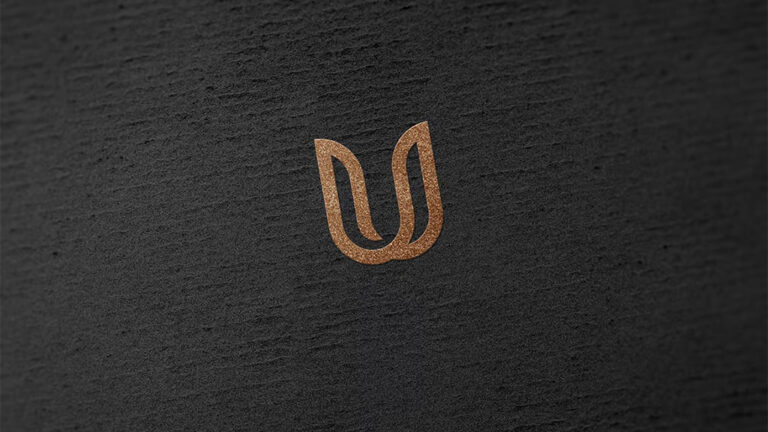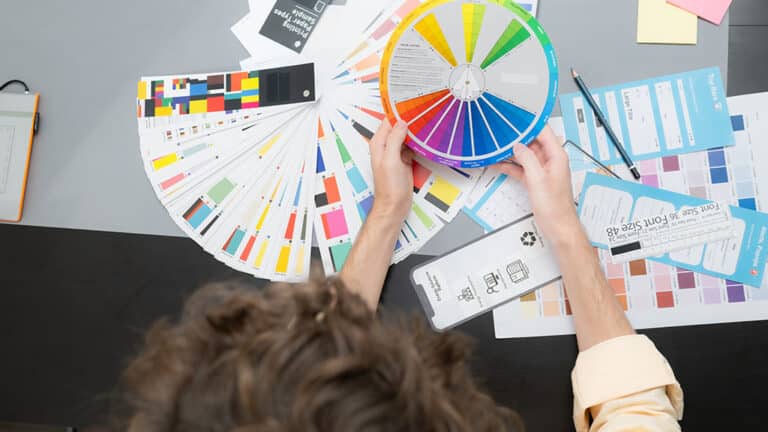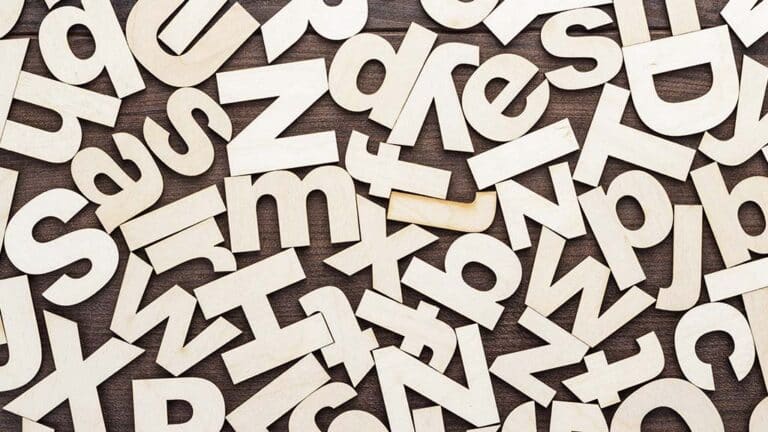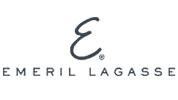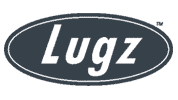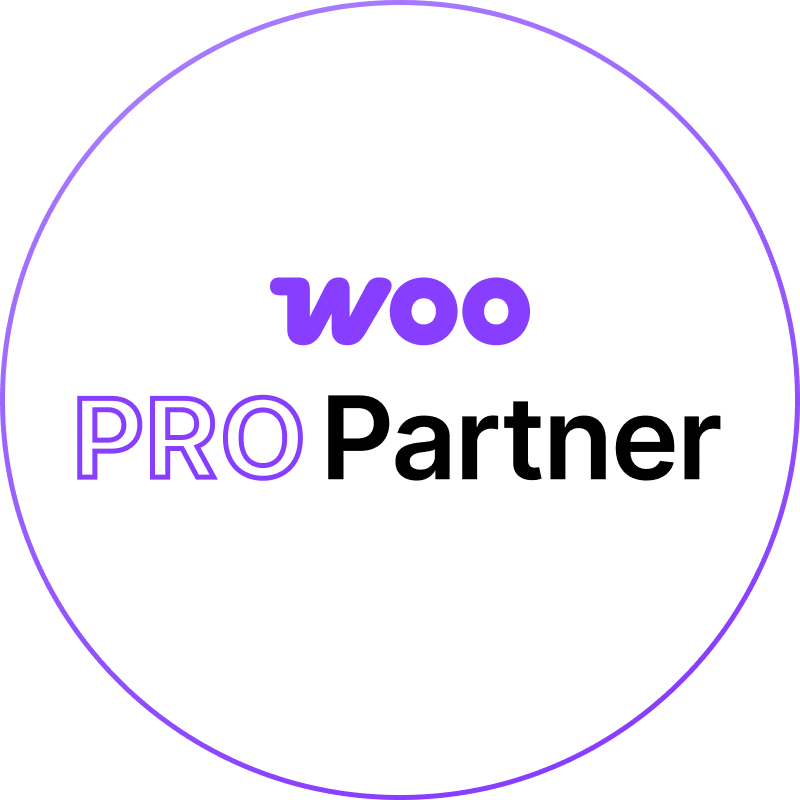What to Expect When You Hire a Graphic Designer
Hiring a graphic designer is more than just outsourcing a task—it’s an investment in your brand’s long-term growth, credibility, and visibility. From logos and brochures to social media graphics and website layouts, professional design ensures your brand looks polished and communicates clearly across every touchpoint. Good design doesn’t just make things look nice; it drives engagement, builds trust, and supports your marketing and sales goals.
If you’ve never worked with a graphic designer before, the process might seem a little mysterious. What actually happens after you say, “I need a logo” or “Can you design a landing page?” The reality is, working with a professional is a highly collaborative and structured experience designed to bring your ideas to life while solving real business problems visually.
Whether you’re hiring a freelancer, working with a studio, or partnering with an agency, understanding what to expect will help you get the most out of the process. It ensures better communication, smoother workflows, and a final product that delivers both creatively and strategically. And if you’re working with a team that offers comprehensive graphic design services, you’re more likely to get consistent, high-quality work that supports your brand across multiple channels.
Initial Consultation and Discovery Phase
The design process typically starts with an initial consultation, sometimes called the discovery phase. This first conversation is all about alignment—making sure the designer understands your business, your brand, and what you’re trying to accomplish. Whether this is a short phone call or a more in-depth meeting, it sets the tone for the entire project.
During this stage, the designer will ask key questions to uncover your goals, target audience, brand personality, and the problem you’re trying to solve. For example, if you’re requesting a logo, they’ll want to know more than just your preferred colors—they’ll dig into what your business stands for, how you want to be perceived, and who your competitors are. If it’s a marketing campaign, they’ll want to understand the offer, the customer journey, and the platforms where the design will appear.
This phase is also when you’ll get to ask your questions—about the designer’s process, timeline, deliverables, and what they’ll need from you. Clear communication during discovery ensures everyone is on the same page and prevents misalignment down the road. It’s the foundation of a successful project and a smooth working relationship.
Creative Brief Development
Once the discovery phase is complete, the designer may develop a creative brief or request one from you. The creative brief is a simple but essential document that outlines all the project details in one place: goals, messaging, tone, audience, format, deadlines, and technical requirements. Think of it as the roadmap for the project—it keeps both you and the designer focused and aligned throughout the process.
Some designers provide a brief template or questionnaire to help gather this information, especially if you’re unsure how to articulate your vision. This document ensures there’s no ambiguity about what’s being created, how it should function, and what the end result should accomplish. It’s particularly helpful for projects with multiple stakeholders or deliverables that span different platforms.
The creative brief doesn’t have to be overly formal or long, but it should be thorough enough to guide the designer’s work. It’s also a great reference point for giving feedback later in the process. When both sides agree on the brief, you’ll know you’re starting from a strong and strategic place—and you’ll be more likely to get a final product that hits the mark.
Research and Concept Exploration
Once the creative brief is approved, your designer will begin the research and concept exploration phase. This is when they take everything they’ve learned about your business, goals, and audience—and start turning those insights into visual ideas. Even though it happens behind the scenes, this phase is one of the most important in the entire process.
Designers often start by researching your industry, competitors, and market trends. This helps them understand what visual cues are commonly used in your space—and how they can make your brand stand out while staying relevant. They may gather inspiration, create mood boards, or sketch rough concepts that explore different directions your project could take. This is especially valuable when branding or developing a new visual identity, as the early ideas will inform color palettes, font choices, and layout styles that reflect your brand personality.
This phase is also where creativity and strategy intersect. A skilled designer doesn’t just aim for something that looks good—they want to create something that works. They’ll evaluate how different styles and visual approaches align with your audience’s expectations, emotional triggers, and behavior patterns. This ensures the final design isn’t just attractive—it’s effective.
You might not see much during this part of the process, but rest assured it’s a time of exploration, refinement, and creative decision-making that sets the stage for the next step: presenting concepts.
Presentation of Initial Concepts
After the research and exploration phase, your designer will present the first round of visual concepts. Depending on the scope of your project, this might be a single concept or multiple distinct directions to choose from. Each concept is typically presented with a short explanation of the thinking behind the design—why certain colors were chosen, what inspired the layout, how it supports your goals, and how it aligns with the creative brief.
For example, if you’re working on a logo, the designer might show three versions: one that’s modern and bold, one that’s classic and minimalist, and one that takes a more playful approach. If you’re reviewing a website homepage, they might show different layout variations to help you visualize how content and visuals could be arranged.
This is a key decision-making point in the project. It’s your opportunity to share your initial reactions, ask questions, and compare options. But it’s also important to evaluate the concepts against your goals, not just your personal preferences. The best design is one that solves the problem outlined in your brief—not just the one that uses your favorite colors.
The designer will typically guide you through the feedback process and help you think through what’s working and what might need refinement. They’ll take your input and use it to improve and finalize the direction you choose.
Feedback and Revisions Process
After the initial concept presentation, you’ll move into the feedback and revisions stage. This is a collaborative process where you and the designer work together to fine-tune the design until it feels right. Good feedback is specific, constructive, and tied to your goals—saying “make it pop more” isn’t as helpful as “can we increase contrast to improve readability?”
Most designers build one or two rounds of revisions into the project scope, which gives you time to test how the design looks in context, share it with stakeholders, and ensure it aligns with your brand’s voice and tone. During revisions, the designer might tweak colors, adjust layout spacing, revise icons, or swap typography—whatever is needed to better meet your expectations while maintaining professional design standards.
This phase requires clear communication and timely responses to keep the project on track. It’s normal to go through a few iterations before landing on the final design, and experienced designers know how to guide the process without losing sight of the original vision.
Ultimately, the goal of this phase is to turn a strong concept into a fully realized design that not only looks great but feels like a perfect fit for your brand.
Final Design Approval and File Delivery
Once you’ve gone through revisions and signed off on the final design, the project moves into the finalization phase. This is where the designer prepares all the necessary files and ensures you have everything you need to use the design effectively across platforms.
Final file delivery can vary depending on the project type. For logos, you’ll typically receive several versions: full-color, black and white, and transparent background files in multiple formats such as AI, EPS, PDF, PNG, and SVG. For print projects, you’ll get print-ready files in CMYK color mode with appropriate bleed and crop marks. For digital designs like social graphics or web banners, you’ll get optimized RGB files ready for upload.
A good designer will also organize your files in clearly labeled folders, making it easy to find what you need. They might provide a usage guide or brief instructions explaining which file types are best suited for specific platforms—especially helpful if you don’t have a background in design.
At this point, you should feel confident that your design assets are complete, polished, and ready to go. You’ve invested in a process that goes far beyond aesthetics—it’s a strategic collaboration that delivers value long after the project wraps. If you’re planning additional projects, ask if the designer offers retainer packages or ongoing support. Many businesses benefit from building a long-term relationship with a designer who already understands their brand and goals.
Timeline and Communication Expectations
Throughout the design process, clear communication and realistic timelines are crucial to keeping the project on track. While each designer or agency works a little differently, most will establish a schedule upfront—one that includes milestones like discovery, concept delivery, revision rounds, and final file handoff.
For simple projects like social graphics or flyers, the timeline might be just a few days. Larger projects, like branding packages or website design, can take several weeks or more depending on complexity. During the initial consultation, your designer will usually provide an estimated timeline based on your scope and urgency.
It’s important to respect those timelines and understand that high-quality design takes time. Rushing the process can lead to poor decisions, less thoughtful design, and missed details. Give your designer time to think creatively, revise thoroughly, and deliver their best work. In turn, make sure you’re responding to questions, reviewing drafts, and providing feedback in a timely manner to avoid unnecessary delays.
Clear, ongoing communication is key to a smooth experience. Most designers will establish their preferred method of contact—whether it’s email, project management tools, or scheduled calls—and let you know how often to expect updates. Being honest and constructive during conversations helps foster a collaborative relationship that benefits both sides.
Rights, Usage, and Ownership
When you hire a graphic designer, it’s important to understand the terms around ownership and usage rights. Not every designer offers full ownership of the work by default, so these details should be discussed early and documented clearly in your contract or proposal.
In most cases, once you’ve paid in full for a project, you receive the rights to use the final approved design for your intended purposes. This includes publishing it on your website, printing it on marketing materials, or using it in advertisements. However, the designer may retain rights to display the work in their portfolio, which is standard practice in the creative industry.
If you require exclusive ownership or want the ability to modify the files in the future, you’ll want to clarify that in advance. This is particularly important for brand assets like logos or illustrations that may need to be adapted later on. Be sure you’re receiving editable source files (like .AI or .PSD) if you plan to make future changes internally.
Also, keep in mind that not everything in a design may be owned outright. Some designs include licensed fonts, stock images, or icon sets. Your designer should inform you if any third-party elements are included, along with licensing terms. If your business needs full commercial rights, it’s important to ensure that any assets used comply with those requirements.
Clarifying these rights upfront avoids confusion down the line and ensures you can confidently use your new visuals wherever and however you need to.
Conclusion: What a Great Design Experience Looks Like
Hiring a graphic designer isn’t just about outsourcing a task—it’s about building a creative partnership. When done right, the process is collaborative, strategic, and deeply rewarding. You walk away with more than just a pretty visual—you get a tool that helps you communicate your message, elevate your brand, and achieve your business goals.
A great design experience is defined by trust, communication, and mutual respect. Your designer brings creative expertise, while you bring insight into your business and audience. When both sides are engaged and aligned, the result is something truly effective.
Knowing what to expect from each phase of the process—from discovery and briefing to revisions, delivery, and rights—helps you feel more confident and prepared. Whether it’s your first design project or your fiftieth, understanding the workflow allows you to collaborate more effectively and get the most out of your investment.
And as your business evolves, you’ll likely find yourself returning to that trusted designer again and again—because great design isn’t just a one-time project. It’s an ongoing advantage that keeps your brand sharp, memorable, and built to grow.

